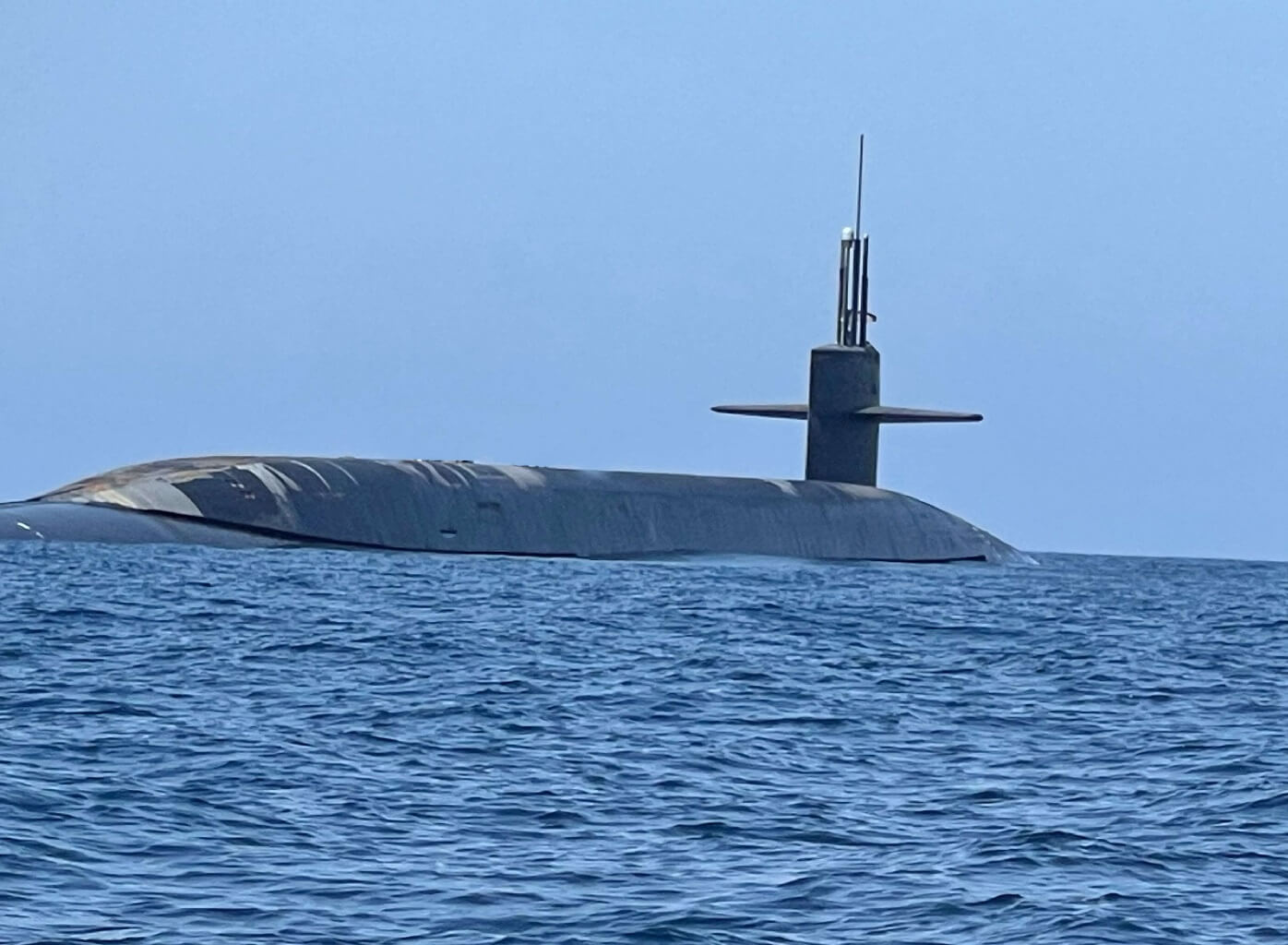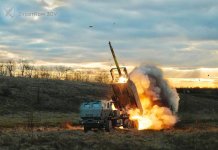South Korean President Yoon Suk-yeol was on a state visit to the US from April 25 for six days. The top agenda of the visit was ‘how to contain, control, and neutralize the North Korean nuclear threat.’
Since the beginning of 2023, North Korea has carried out about a dozen missile tests. Kim Jong Un, the North Korean dictator, has been categorical in condemning military exercises being carried out jointly by South Korean and US military and has threatened to retaliate.
South Korea and the US have regularly carried out military exercises. However, American and South Korean relations went downhill during Trump’s presidency.
The Biden regime corrected that aberration and the relations between Seoul and Washington DC have improved considerably. The recent joint military exercise, touted as
largest ever to date is testimony to that.
While acknowledging South Korean concerns, the US president was categorical in stating during a joint press conference at the White House: “Our mutual defense treaty is iron clad and includes our commitment to extend a deterrence, including the nuclear threat, the nuclear deterrent.”
The latest agreement between Seoul and Washington DC would imply regular deployment of strategic assets, namely US nuclear-armed submarines (SSBNs). The last visit of US nuclear ballistic submarines to South Korean waters was in 1980.
The visit of the South Korean President to the US is undoubtedly a high point in Seoul and Washington relations, especially given the exponential growth in the North Korean arsenal.
The South Korean President had a one-on-one meeting with US Defense Secretary Lloyd Austin, who has made many trips to South Korea in the recent past to meet his counterpart.
Austin told the South Korean President, “I want to underscore, Mr. President, what I said in January this year. The US commitment to the defense of the (Republic of Korea) is ironclad, and so is our extended deterrence commitment to your country, which includes the full range of US defense capabilities, including conventional, nuclear, and missile defense capabilities.”
South Korean President acknowledged and expressed confidence about the extended deterrence capability.
Proposed US Nuclear Submarine Deployment
To protect South Korea from the North Korean nuclear threat, the US has announced that it will deploy SSBN in South Korean waters. The event is yet to take place.

But if the US goes ahead with the deployment of nuclear-armed submarines in proximity to South Korea, it might result in direct confrontation not only between the US and North Korea but also between the US and China.
The World should be prepared to witness a replay of the 1962 Cuban missile crisis in the East China Sea because of the similarity of events slated to occur soon.
The seeds of the impending crisis have been sown due to the US’ recent unwanted and undesirable initiatives.
A look at the globe will indicate that US nuclear submarines, equipped with nuclear-warhead Submarine Launched Ballistic Missiles, will also be able to strike mainland China.
However, if the SSBN deployment indeed does take place, it might, and will, be different from the Cuban Missile Crisis due to the following reasons:
a. In 1962, only two nuclear powers, the US and the USSR, challenged each other with a nuclear strike.
b. China, then, was not a nuclear power. China exploded its first nuclear device on October 8, 1964.
c. In 2023, there are nearly a dozen nations in possession of nukes.
d. China is a formidable economic and nuclear power now.
e. In 1962, the USSR’s decision to deploy nuclear missiles in Cuba forced the US to retaliate. Then, the USSR was the initiator. The US was the affected party.
f. In 2023, China will be the affected party, and the USA will be the initiator if the US does not back off from its decision to deploy SSBNs near South Korea.
g. In the event of an escalation, the US will have to face nukes from China and North Korea but also (maybe) from Russia.
Key Issues
The key issue, which might rather lead to a similar situation as the Cuban Missile Crisis, is the US announcement to deploy nuclear weapons capable submarines near South Korea.
Such a deployment aims to protect South Korea from any North Korean military or nuclear misadventure. However, a closer look at the probable region of deployment of nuclear submarines will indicate that the US will be able to threaten the underbelly of China exactly in the same manner as the Soviet missiles threatened the US underbelly. China will almost certainly react or retaliate in the way deemed fit.
Should that happen, will diplomacy succeed yet again and prevent a nuclear holocaust? Global grouping in 2023 is vastly different from what prevailed in 1962.
Unconfirmed reports indicate that the last SSBN from the US visited South Korea in 1980 and was believed to have sailed close to Kanghwa Bay, West of Inchon. SSBNs will have the freedom to deploy unchallenged anywhere in the Sea of Japan, East of South Korea, and the Yellow Sea region, West of South Korea.
SSBNs are extremely difficult to track. China, Russia, or North Korea cannot track and confirm the presence of US Navy SSBNs. If deployed in the abovementioned areas, the SSBN will threaten North Korea, China, and Russia.
China’s Concerns
Beijing has already reacted by describing the planned deployment of SSBNs by the US as a bid to promote the latter’s selfish geopolitical interests.
The US expansion of the nuclear umbrella has been termed an irresponsible action and a threat to world peace. The Chinese spokesperson said, “The United States has put regional security at risk and intentionally used the (Korean) peninsula issue as an excuse to create tensions.
What the US does is full of Cold War thinking, provoking bloc confrontation, undermining the nuclear non-proliferation system, damaging the strategic interests of other countries, exacerbating tensions on the Korean peninsula, undermining regional peace and stability, and running counter to the goal of the de-nuclearisation of the peninsula.
Although the US has clarified that no nuclear asset of the US will be permanently stationed in South Korea, however SSBNs, nuclear-capable bombers, and aircraft carriers will visit South Korea regularly.
Incidentally, the US decision to deploy Theater High Altitude Area Defense (THAAD) anti-missile system in South Korea in 2016 was vehemently opposed by China because China viewed it as a threat to its national security. China retaliated by imposing economic sanctions against South Korea.
The recently concluded AUKUS treaty has already raised hostility between China and the US. The decision to deploy SSBNs capable of carrying up to 20 MIRVed ballistic missiles in close proximity has invited extremely adverse reactions from China.
Russian Reaction
The Russian reaction has been similar. Russian foreign ministry spokesperson said, “The development is destabilizing in nature and will have serious negative consequences for regional security impacting global stability. The United States and NATO’s drive for decisive military superiority would bring nothing but escalating tensions and could provoke an arms race”.
What Was the Cuban Missile Crisis Of 1962
The Cuban Missile Crisis is often incorrectly quoted as a moral US victory over the USSR. The genesis of the most dangerous and volatile event after World War II was the deployment of nuclear-tipped missiles by the then USSR in Cuba, enabling it to hit the underbelly of the US. The World came close to witnessing the nuclear exchange between the two superpowers: the US and the USSR.

US President John F. Kennedy’s advisors had asked him to exercise the nuclear option, but Kennedy declined. But for deft diplomacy and dialogue between Kennedy and the USSR’s leader Nikita Khrushchev, a nuclear war was imminent.
The US and the USSR decided to adopt the route of peaceful negotiations. The USSR agreed to remove nuclear-tipped missiles from Cuba. In return, the US removed Jupiter missiles from Turkey.
The uneasy peace has continued since then, notwithstanding various treaties, namely, SALT, START I and II, and many more. That peace lasted till the Cold War ended with the disintegration of the USSR in 1991.
During the Cold War era, immediately following the Cuban Missile Crisis, the US propounded various terms defining a nuclear exchange. Prominent among those were ‘Flexible Response,’ ‘Mutually Assured Destruction,’ and ‘Massive Retaliation.’
Similarly, while promising South Korea an assured nuclear umbrella to protect it from North Korean nukes, the US has coined a new term, ‘Extended Deterrence.’
Strategic Implications Of SSBN Deployment In South Korea
The USSR’s decision to deploy ground-based nuclear missiles in Cuba in 1962 was accomplished near total secrecy. In contrast, the proposed decision of the US to deploy submarine-based nuclear missiles in South Korea is quite a different military option. It is a chalk-and-cheese comparison, although the weapon (nuclear missiles) remains the same.
The ground-based nuclear missile deployment was a stationary system, easily spotted and photographed by the USAF spy plane U-2. Indeed, the US did not learn of the USSR’s actions until deployment was nearly complete.
However, in the case of an SSBN deployment, the weapon platform is mobile at will and extremely difficult to track. Hence SSBN deployment, even though announced by the US, is a far more potent military option and poses a higher threat than the USSR missile deployment in Cuba.
It is quite likely that the US Navy SSBNs have been and are still prowling around in the South China Sea, Sea of Japan, or Yellow Sea. But that is done in secrecy. Washington’s declaration publicly announces deploying an SSBN in China’s backyard.
Will China accept it, or will China also deploy its nuclear submarine in the Pacific near the West coast of the US?
US Navy SSBNs
As of date, the US has 14 operational SSBNs. Eight SSBNs operate outside the naval establishment at Kitsap in Washington state on the Pacific Ocean. The remaining six SSBNs are based at Kings Bay, Georgia, on the Atlantic side.
When an SSBN moves out for operational duty, it is in direct contact with the White House. Only the Captain of the SSBN and the White House know where the SSBN is headed for.
On January 15, the US Navy SSBN Nevada, an Ohio class nuclear-powered submarine, which may have been carrying 20 Trident ballistic missiles, arrived at Guam. Was the US trying to send a message to China not to take any action in Taiwan Strait?
Conclusion
The US decision to deploy SSBNs in South Korea would almost certainly invite adverse reaction and possible retaliation from China, which Russia and North Korea will support.
Will it be in the form of a Chinese military assault on Taiwan? Will the US be ready for a nuclear exchange and risk devastation in mainland US merely to protect South Korea? Or will the US back off in 2023, like the USSR did by withdrawing nuclear missiles from Cuba in 1962? In 1962, diplomacy won. Will it succeed this time too?
If the US goes ahead with the intended deployment, it might benefit India by default because China would then be busy full-time with the US, South Korea, and Taiwan. Only India could convince the US to back off in the prevailing unstable global situation.
Will China seek India’s intervention to convince the US to back off? Or will India unilaterally act and convince the US to withdraw its decision? Notwithstanding these conjectures, India might still play an important role and convince China and the US to stop this brinkmanship.
- Gp Cpt TP Srivastava (Retd) is an ex-NDA who flew MiG-21 and 29. He is a qualified flying instructor. He commanded the MiG-21 squadron. He is a directing staff at DSSC Wellington and chief instructor at the College of Air Warfare. VIEWS PERSONAL
- Follow EurAsian Times on Google News




